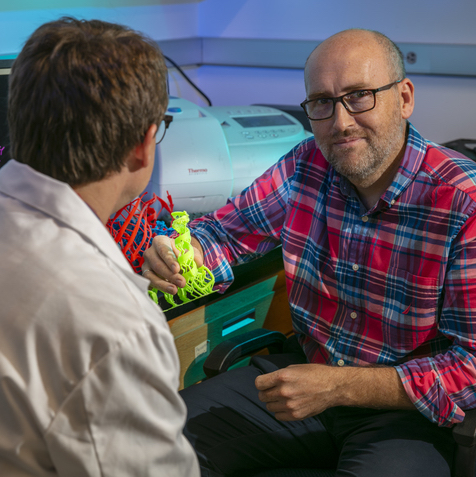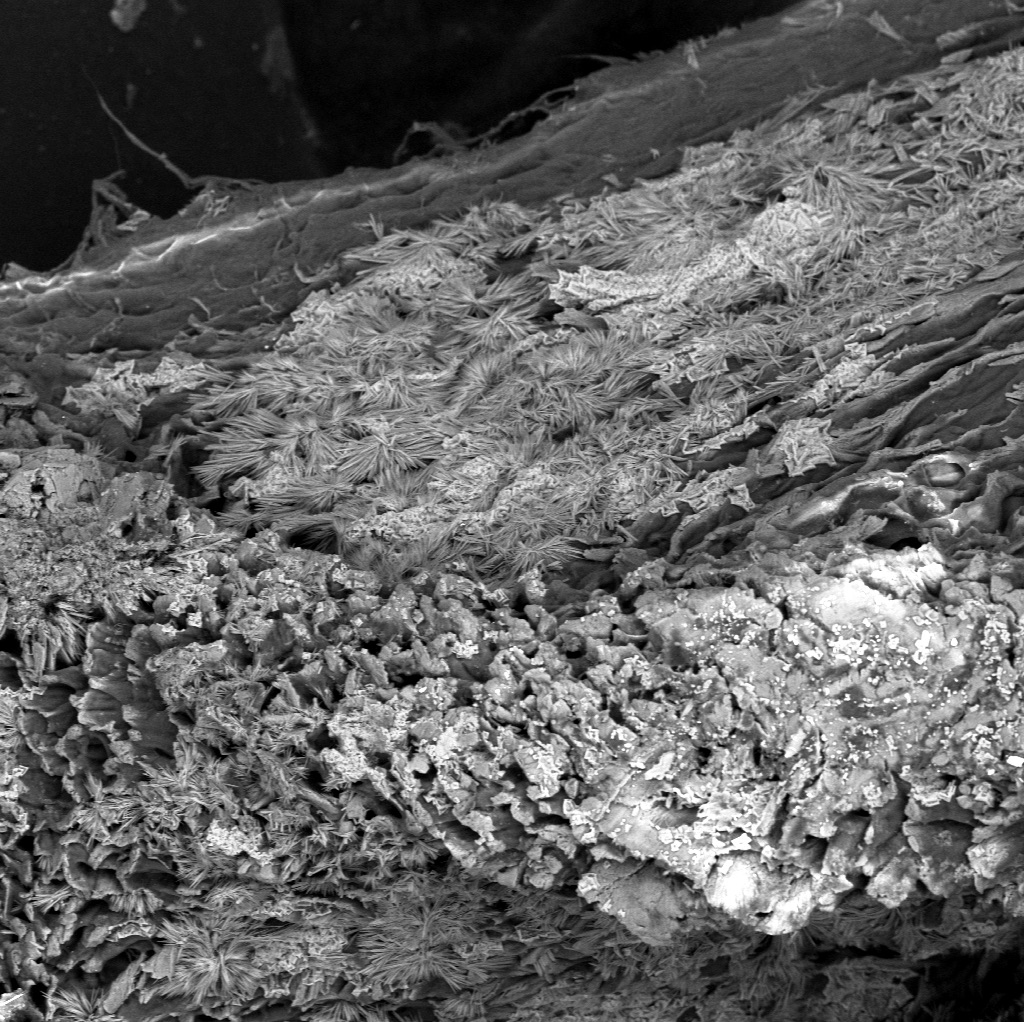 Drug Discovery Drug Discovery
The drug discovery program in the Department of Chemistry and Biochemistry addresses a range of problems at the interface of chemistry and biology, including medicinal chemistry and chemical biology. Our faculties utilize the well-established medicinal-chemistry methods of small-molecule and peptide synthesis in solution and on solid-phase (individual compounds or combinatorial library synthesis), marine natural products isolation, ligand and target-based computational modeling, and in vitro biochemical and cell-based testing to provide a robust and cost-effective drug discovery program. These efforts created unique collections of diverse compounds for lead identification via biochemical screening assays and/or structure-based approaches. The main advantage of our drug discovery program is high flexibility, allowing for easy adaptation to any biological system under investigation. Novel cell imaging, anticancer, antimicrobial, and central nervous system active agents have been identified from this collection of compounds. Graduate and undergraduate students involved in this research will learn about approaches utilized by our faculties to identify novel, pharmacologically active molecules to treat human diseases, further enhancing their training, skills, and employment opportunities in the pharmaceutical and biotech industry.
|
 Chemistry Education Chemistry Education
We are proud of our leadership role in STEM education activities, including the development and implementation of peer-led team learning activities such as ChemBOND and OrgoBOND into the curriculum. Our chemical education research program focuses on evaluating the effects of undergraduate research and mentoring on student success, retention, and persistence. We also study the effects of active learning, technology and instrumentation in classroom and laboratory settings, and the impact of pedagogical interventions across the curriculum on student learning.
|
 Chemical Biology Chemical Biology
Chemical biology research bridges chemistry and biology and offers interdisciplinary approaches to dissect complex biological processes. Synthetic chemistry tools are used to design biological models of medical relevance, and biochemistry and molecular biology techniques are used to explore these processes at the molecular level. Faculty in this research area work on the role of proteolysis in disease progression, development of glycopeptide libraries that resemble natural glycan arrays found on the surface of cells as tools to study the functional significance of protein glycosylation, application of natural products chemistry towards developing novel anticancer and antimicrobial agents, and mechanisms of bacterial resistance. The results from these studies may lead to new preventive and/or disease-modifying therapeutic strategies for cancer, cardiovascular and brain-related disorders, and infectious diseases.
Graduate and undergraduate students trained in the chemical biology will be exposed to an in-depth understanding of the relationship between the structure and function of biological macromolecules and will have an outstanding foundation for careers in STEM-related disciplines.
|
 Environmental & Analytical Chemistry Environmental & Analytical Chemistry
Analytical chemistry encompasses a wide variety of qualitative, quantitative, and instrumental methods to determine the chemical content of inorganic, organic and biological samples. A large array of modern analytical methods is utilized in research and teaching in the Department of Chemistry and Biochemistry. These methods include ultraviolet-visible (UV-vis), infrared (IR), circular dichroism (CD) and nuclear magnetic resonance (NMR) spectroscopies, mass spectrometry (MS), and high-performance liquid chromatography (HPLC). Our undergraduate courses include these techniques in order to prepare students for graduate school and/or careers in industry and research. Environmental chemistry utilizes all of these techniques to study problems relating to the environment, such as how water quality relates to nitrogen and phosphorous forms and concentrations and their effects on harmful algal blooms.
|
 Synthetic Organic Chemistry Synthetic Organic Chemistry
In this area, we focus on the discovery of organic chemistry reactivity and the revitalization of existing reactions based on new mechanistic insights. Particular emphasis is placed on the development of new asymmetric methods using organocatalysts, including those biomimetically inspired, for the synthesis of allenes, novel amino acids, and alkaloids. These are used as powerful building blocks in the construction of bridged bicyclic compounds, alkaloid natural products, and glycopeptides. These organic synthesis studies ultimately enable the discovery and exploitation of therapeutically valuable compounds for potential applications as neuroprotective agents in diseases of the brain and novel antibiotics, as well as in carbohydrate recognition for cancer applications.
|
 Biophysical & Computational Chemistry Biophysical & Computational Chemistry
Biophysical chemistry uses the techniques and theories of physics to study biological systems at the atomic and molecular level. Spectroscopic, calorimetric, and computational methods are employed to study the properties of a variety of systems relevant to disease pathogenesis (e.g., Huntington's Disease, Alzheimer's Disease, and cancer), including the structure and conformational dynamics of peptides, proteins, RNA and DNA, carbohydrate-protein interactions, and enzyme kinetics. The department utilizes the FAU High-Performance Computing (HPC) cluster, which hosts both CPU and GPU based computing nodes for computational calculations.
|
 Materials Science Materials Science
Materials Science involves the use of chemistry for the design and synthesis of solid materials with improved characteristics. Current research focuses on improving our understanding of biological crystal growth in complex organic matrices. Bio-inspired composites have the potential to compete with commercial plastics while being more environmentally sustainable. An integral part of the research effort is to develop quantitative approaches to study structure, chemical composition, and macroscopic properties of mineralized tissues. The methodology includes confocal Raman microscopy, Electron Microscopy and X-ray based techniques.
|